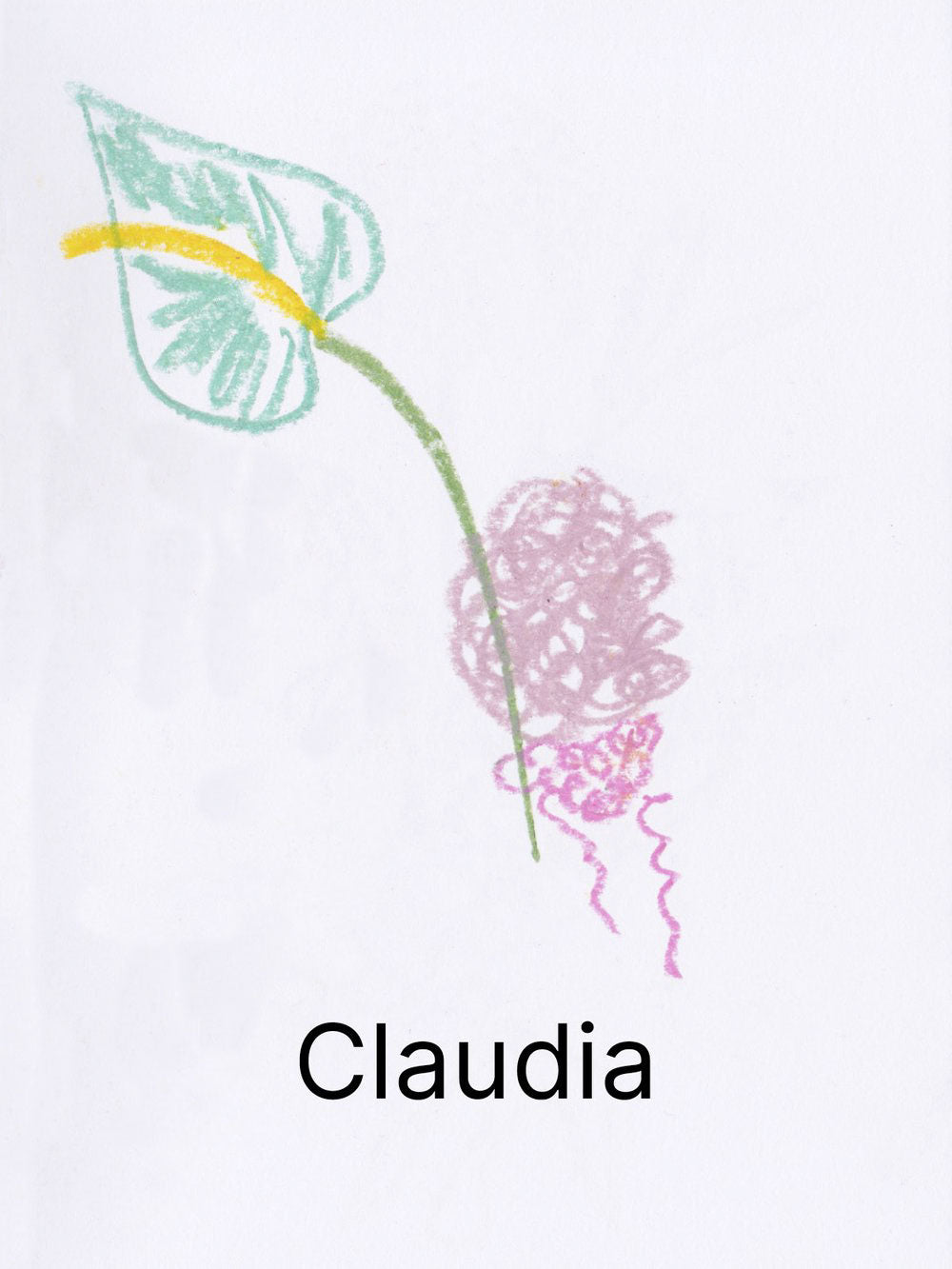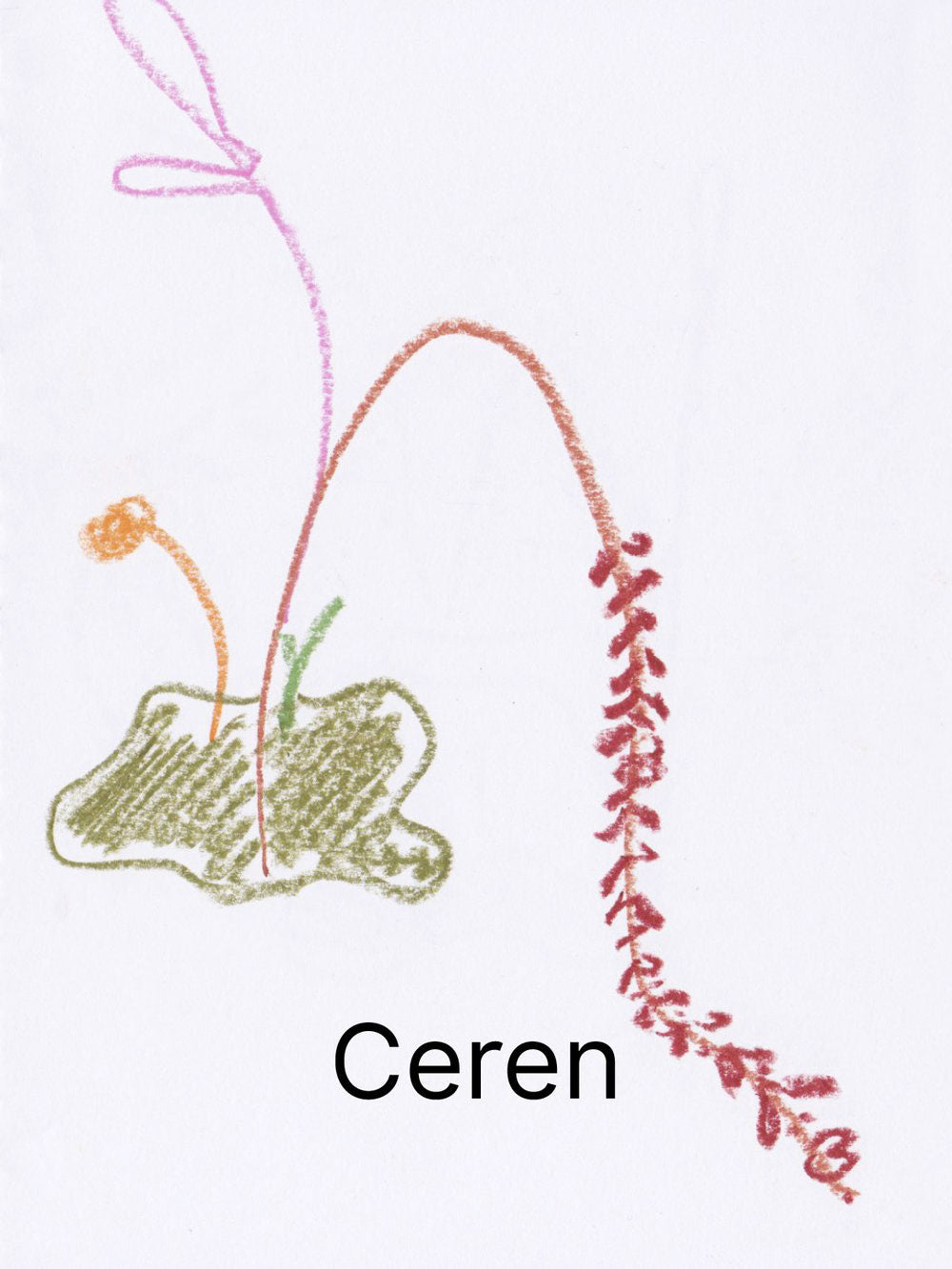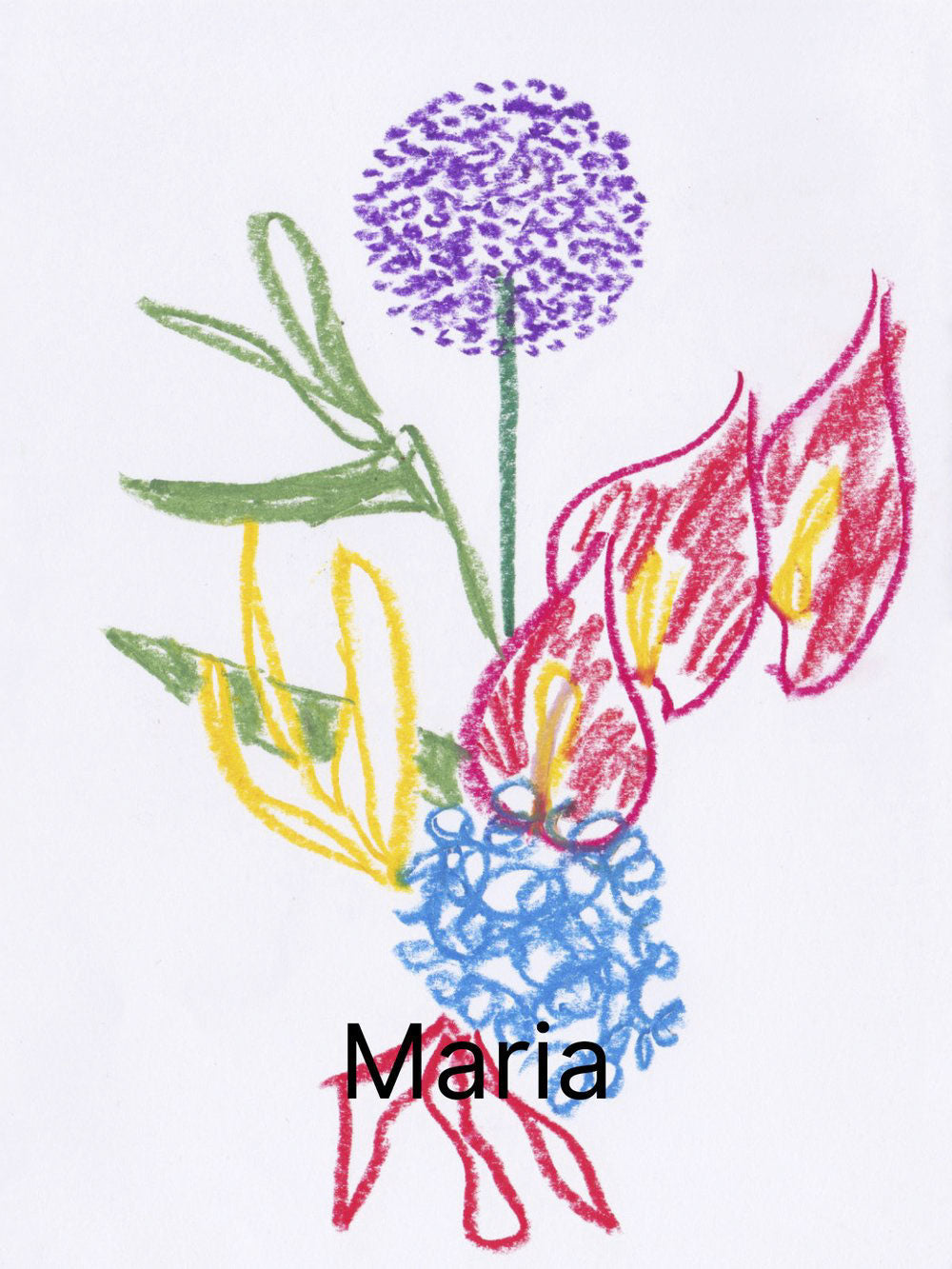Big Small Talks
Claudia Castaldi

I met Claudia about eight years ago when she organized secrets picnics on the roofs of Milan and dinners with unknown people. Her goal was to create new connections and let us discover alternative ways of tasting traditional foods like when she made me taste Tortelli (a sort of dumplings) presented in small plastic bags from which to drink through a straw. Claudia is a photographer, she is delightfully shy and works as a food stylist.
instagram.com/claudia__castaldi
What does it mean to prepare food for photo shoots?
One could simplify saying that it is about cooking cute and photogenic dishes, in reality, the process is more interesting.
Being food stylist means designing and then making a recipe: we follow the client's brief and together with the art director we plan the plate, defining colors, shapes, and textures.
During the shooting, the recipe is made on the set, with meticulous research and attention to the composition of the final dish.
Is the food treated as if I were to cook a classic lunch?
Usually not but only for mere practical matters, to speed up the realization of the recipe and above all to make the dish more lasting.
I want to dispel the myth that on the photographic set is all fake, in reality, we always start from the real recipe and try to make a dish that resists as much as possible under the warm lights of the set. Sometimes we skip the steps, for example, I never put salt, I shorten or lengthen the cooking to make the dish more stable. They are small tricks that make the result very nice but less tasty than the real recipe.
If you have to photograph a plate of tomato pasta how do you do it?
The pasta is complex enough to photograph because it requires a long process, in which the use of brushes and tweezers is essential.
In concrete, the pasta is cooked al dente with some spice to avoid it being too pale. Separately prepare the sauce trying to cook it so that it maintains the texture of the tomato and a beautiful red color.
When you go to the plate, in jargon you say “to set up the dish", you place the dough with tweezers and distribute the sauce with some brushes.
It’s actually really difficult because the pasta tends to slip from all parts of the dish and the tomato sauce dries quickly under the lights of the set, so you often have to refresh the pasta with a brush and a mix of water and oil.
Which was the hardest food to prepare and photograph, why?
Spaghetti is always a challenge!
Each customer has a different view on how spaghetti should be "combed" and there are various schools of thought on where and how it should be distributed: there are those who prefer spaghetti messed up with the sauce in the center, ones never want to see the end of the spaghetti, some others prefer the curls with the sauce evenly distributed.
I spent hours and hours combing spaghetti dishes with tweezers and brushes, now I became a black spaghetti belt.
If you could invite 3 people to dinner, who would you invite and why?
Difficult to decide only 3 people.
Surely Elvis Presley, he is a character that has always fascinated me and I love his music. I would like to hear from him in his voice the real recipe of the famous "Fool's gold", the diabolical 84.000 Kcal sandwich that, it is said, brought him to death.
I never understood why "The King" decided to commit suicide with a sandwich.
It would be nice to have dinner with Anthony Bourdain, to listen to all the stories of the dirty New York kitchen brigades and his food trotter stories. With his books, he made me passionate about this rock'n'roll version of the culinary world.
Most of all I would like to have Alfred Hitchcock at dinner.
I saw all his films and read all his interviews, watched shows and television series.
I grew up on bread and Hitchcock. I know every scene of his films by heart and I think he was a brilliant director and a character sui generis.
It seems he was a gourmet but with a strange relationship of love/hate for the kitchen.
In his films, in fact, there are always scenes where food takes on a strange significance like when Grace Kelly prepares a romantic dinner for James Stuart, while they look at the neighbors in “Rear Window’, or in the case of suspense created by the glass of milk prepared by Cary Grant in "Suspicion".
In the famous interview with Truffaut, Hitchcock even stated that he wanted to shoot a film about food only.
Alfred would be a great company with his English humor, during a nice dinner spent chatting about murders and good food.
When food becomes your subject/work object, how much does the relationship change in everyday meals?
It is a relationship of love and hate.
Love because you have to treat the food with respect and you have to understand it to enhance it to the maximum. When the products come to the studio we always organize a sort of tasting, to better understand the characteristics and decide how to declinate them.
I hate because in the end I also spend months on the same product and can become very repetitive. I do not like to waste food, so our studio lunches are almost always set leftovers. This means that you are dealing with the same food for days and days and, even if it may be a delicacy, everyone sooner or later gets tired.
More beautiful or tastier, a right mix or the apotheosis of both?
I would say the apotheosis of both because everything depends on what your parameter of beauty is. I find flawless food beautiful because it is real. Perfection in food is sometimes aseptic, a small imperfection makes it realistic, inviting and appetizing, so even better because it's true.
7 Small Talks
- Your daily uniform: Japanese apron
- The city of the heart: Paris
- The favorite restaurant in the city where you live: Casa Ramen
- Favorite flowers: fried zucchini flowers
- Your comfort food: croissants
- Your food stylist guru: Donna Hay
- A friend of yours to interview? What should I ask? Chiara Di Pinto of Studio Pepe, I would ask her how to become a successful designer in a competitive and masculine environment such as design.
Ho conosciuto Claudia circa otto anni fa quando organizzava pic-nic segreti sui tetti di Milano e cene con persone sconosciute. Il suo obiettivo era creare nuove connessioni e farci scoprire modi alternativi di degustare i cibi della tradizione come quando mi ha fatto assaggiare tortelli presentati in piccole buste di plastica da cui bere tramite una cannuccia. Claudia è fotografa, è deliziosamente timida e lavora come food stylist.
instagram.com/claudia__castaldi
Cosa significa preparare il cibo per i set fotografici?
Si potrebbe semplificare dicendo che si tratta di cucinare piatti carini e fotogenici, in realtà il processo è più interessante.
Essere foodstylist significa progettare e poi realizzare una ricetta: si segue il brief del cliente e si progetta insieme all’art director il piatto, definendo i colori, le forme e le textures.
In fase di scatto si realizza la ricetta sul set, con una minuziosa ricerca e attenzione della composizione del piatto finale.
Il cibo viene trattato come se dovessi cucinare un classico pranzo?
Di solito no ma solo per mere questioni pratiche, come velocizzare la realizzazione della ricetta e soprattutto per rendere il piatto più duraturo.
Voglio sfatare il mito che sul set fotografico sia tutto finto, in realtà si parte sempre dalla ricetta reale e si cerca di realizzare un piatto che resista il più possibile sotto le calde luci del set. A volte salto dei passaggi, per esempio non metto mai il sale, accorcio o allungo le cotture per rendere il piatto più stabile. Sono piccoli trucchi che rendono il risultato molto bello ma meno buono della vera ricetta.
Se devi fotografare un piatto di pasta al pomodoro come fai?
La pasta è abbastanza complessa da fotografare perché richiede un processo lungo, nel quale è fondamentale l'uso di pennellini e pinzette.
In concreto si cuoce la pasta al dente con qualche spezia per evitare che risulti troppo pallida. A parte si prepara il sugo cercando di cuocerlo in modo che mantenga la texture del pomodoro e un bel colore rosso.
Quando si passa all’impiattamento, in gergo si dice “montare il piatto”, si posiziona la pasta con le pinzette e si distribuisce il sugo con dei pennellini.
E’ più facile a dirsi che a farsi perché la pasta tende a scivolare da tutte le parti del piatto e il sugo di pomodoro si secca velocemente sotto le luci del set, quindi bisogna spesso rinfrescare la pasta con un pennellino e un mix di acqua e olio.
Quale è stato il cibo più difficile da preparare e fotografare, perché?
Gli spaghetti sono sempre una bella sfida!
Ogni cliente ha una visione diversa su come dovrebbero essere “pettinati” gli spaghetti e ci sono varie scuole di pensiero su dove e come debba essere distribuito il sugo: c’è chi preferisce lo spaghetto scompigliato con il sugo al centro, chi non vuole mai vedere la fine dello spaghetto, chi predilige i boccoli con il sugo distribuito uniformemente.
Ho passato ore e ore a pettinare piatti di spaghetti con pinzette e pennellino, adesso sono diventata cintura nera di spaghetti.
Se tu potessi invitare 3 persone a cena, chi inviteresti e perché?
Difficile decidere solo 3 persone.
Sicuramente Elvis Presley, è un personaggio che mi affascina da sempre e adoro la sua musica. Vorrei sentire dalla sua viva voce la vera ricetta del famoso “Fool’s gold”, il diabolico panino da 84.000 Kcal che, si dice, lo abbia portato alla morte. Non ho mai capito perché “The King” abbia deciso di suicidarsi con un panino.
Sarebbe bello avere a cena anche Anthony Bourdain, per poter ascoltare tutti i racconti delle sporche brigate di cucina di New York e le sue storie da food trotter. Con i suoi libri mi ha fatto appassionare a questa versione rock’n’roll del mondo culinario.
Più di tutti mi piacerebbe avere a cena Alfred Hitchcock. Ho visto tutti i suoi film e letto tutte le sue interviste, guardato show e serie televisive.
Sono cresciuta a pane e Hitchcock. Conosco a memoria ogni scena dei suoi film e credo sia stato un regista geniale e un personaggio sui generis. Pare fosse un buongustaio ma con uno strano rapporto di amore/odio per la cucina. Nei suoi film infatti ci sono sempre delle scene in cui il cibo assume una strana valenza come quando Grace Kelly prepara la cenetta romantica per James Stuart, mentre scrutano i vicini in “La finestra sul Cortile”, oppure nel caso della suspense creata dal bicchiere di latte preparato da Cary Grant nel “Sospetto".
Nella famosa intervista con Truffaut, Hitchcock ha perfino dichiarato che avrebbe voluto girare un film solo sul cibo.
Alfred sarebbe un’ottima compagnia con il suo humour inglese, durante una bella cena passata a chiacchierare di omicidi e buon cibo.
Quando il cibo diventa il tuo soggetto/oggetto di lavoro, quanto cambia il rapporto nei pranzi di tutti i giorni?
E’ un rapporto di amore e odio.
Amore perché devi trattare il cibo con rispetto e devi capirlo per esaltarlo al massimo. Quando arrivano i prodotti in studio organizziamo sempre una sorta di degustazione, per capire al meglio le caratteristiche e decidere come declinarli.
Odio perché alla fine passi anche dei mesi sul solito prodotto e può diventare molto ripetitivo. Non mi piace sprecare il cibo, quindi i nostri pranzi in studio sono quasi sempre degli avanzi di set. Questo significa che hai a che fare con lo stesso cibo per giorni e giorni e, per quanto possa essere una prelibatezza, chiunque prima o poi si stanca.
Più bello o più buono, un giusto mix o l'apoteosi di entrambi?
Direi l’apoteosi di entrambi, perché tutto dipende da quale sia il tuo parametro di bellezza. Trovo bellissimo il cibo imperfetto perché è reale. La perfezione nel cibo a volte è asettica, una piccola imperfezione lo rende realistico, invitante e appetitoso, quindi ancora più buono perché vero.
7 Small Talks
- La tua uniforme quotidiana: grembiule giapponese
- La città del cuore: Parigi
- Il ristorante prediletto nella città in cui vivi: Casa Ramen
- I fiori preferiti: fiori di zucca fritti
- Il tuo comfort food: croissant
- Il tuo food stylist guru: Donna Hay
- Una tua amica da intervistare, cosa dovrei chiederle: Chiara Di Pinto di Studio Pepe, chiedile come si diventa una designer di successo in un ambiente competitivo e maschile come quello del design.

